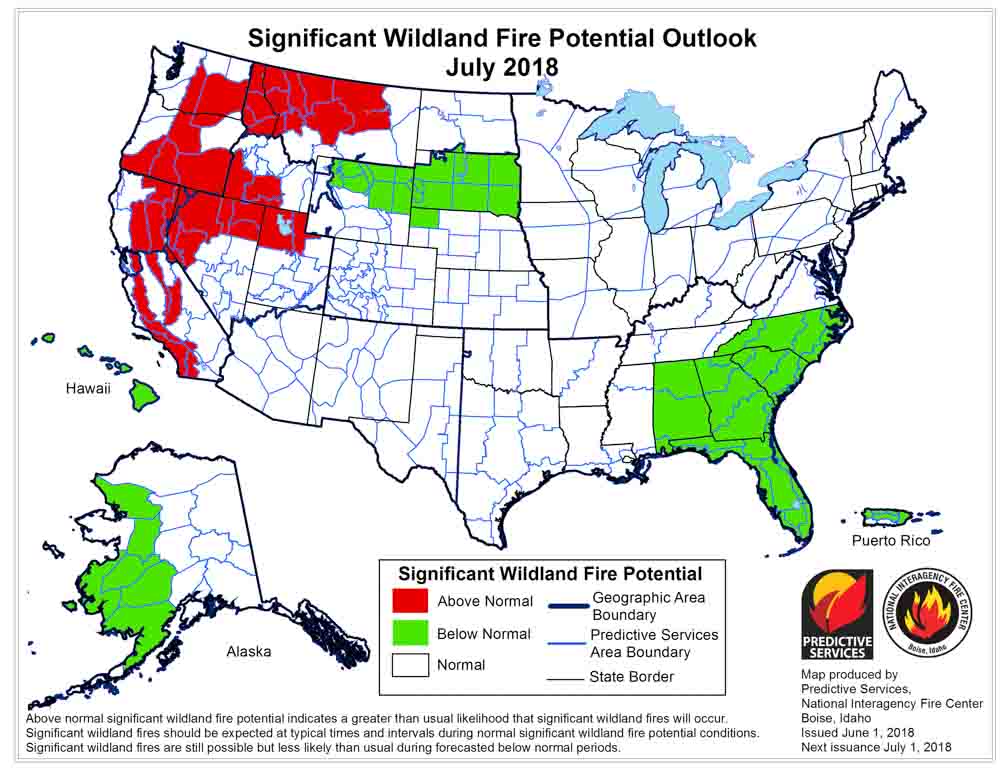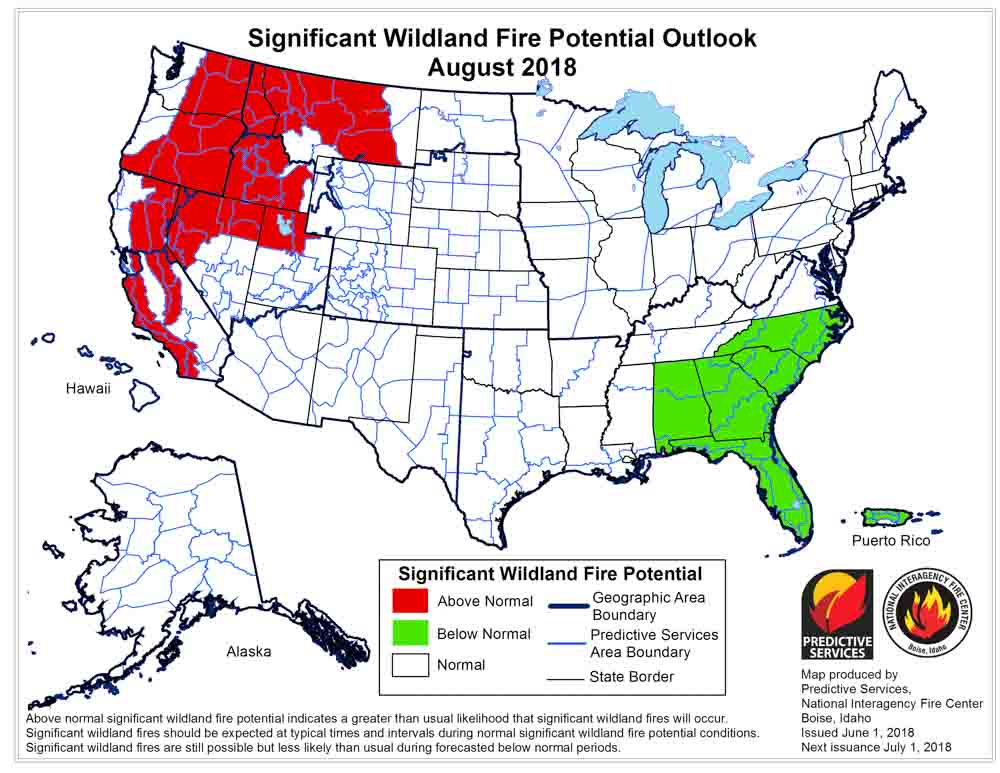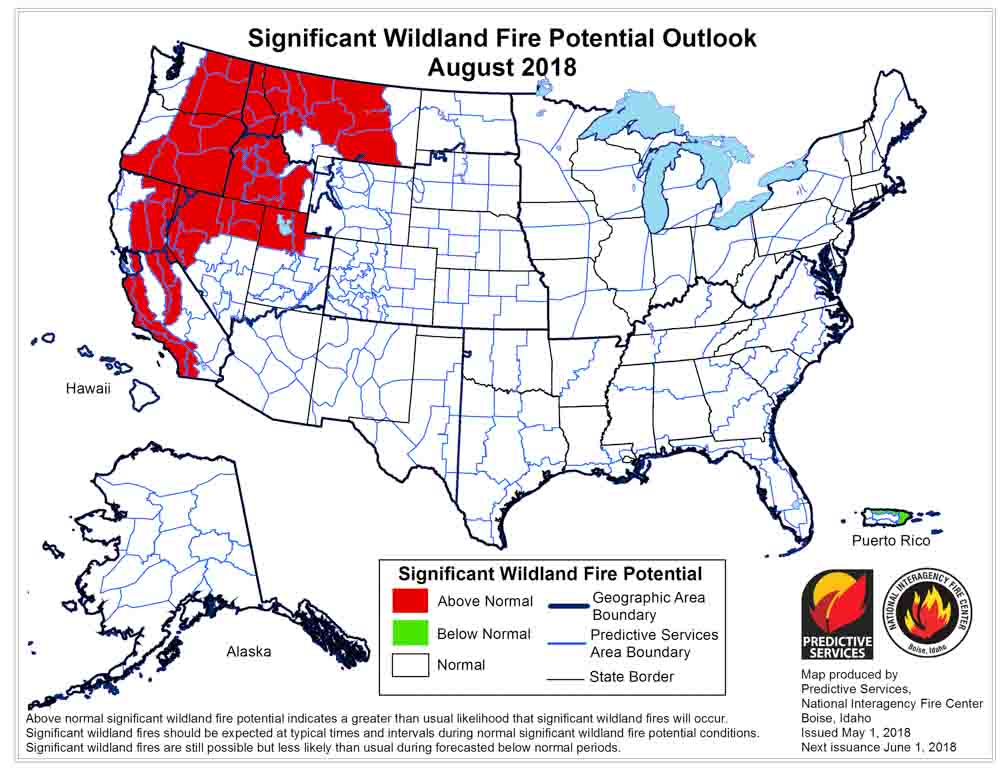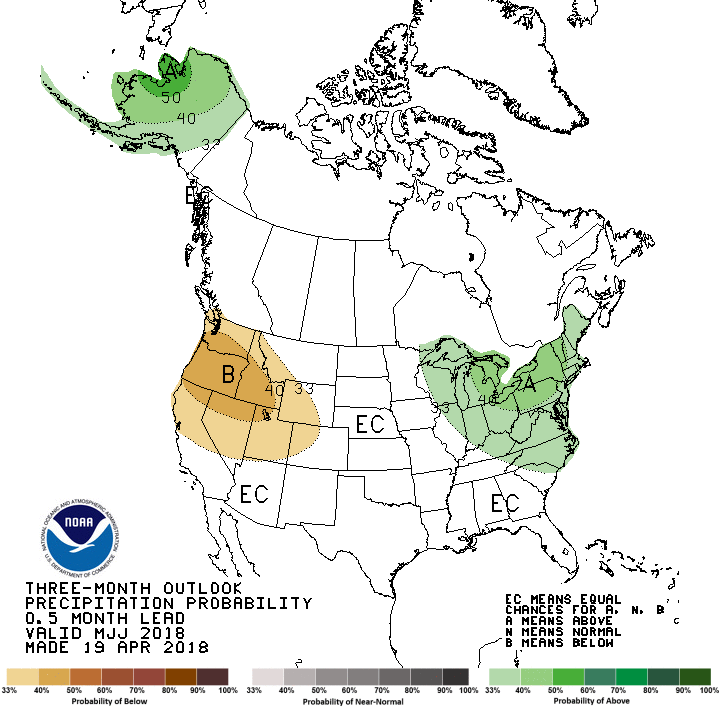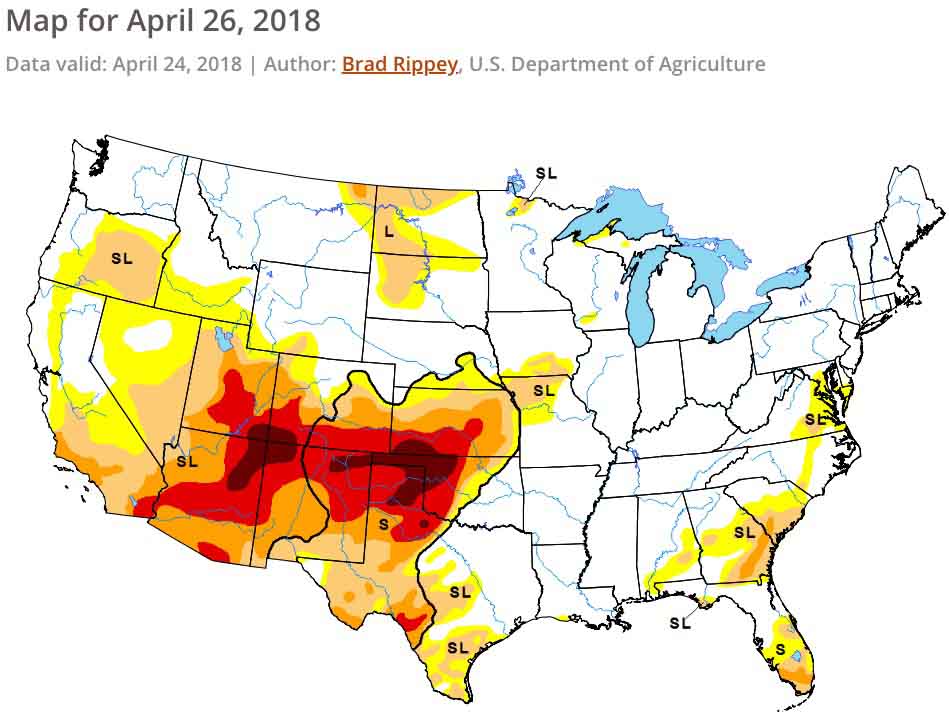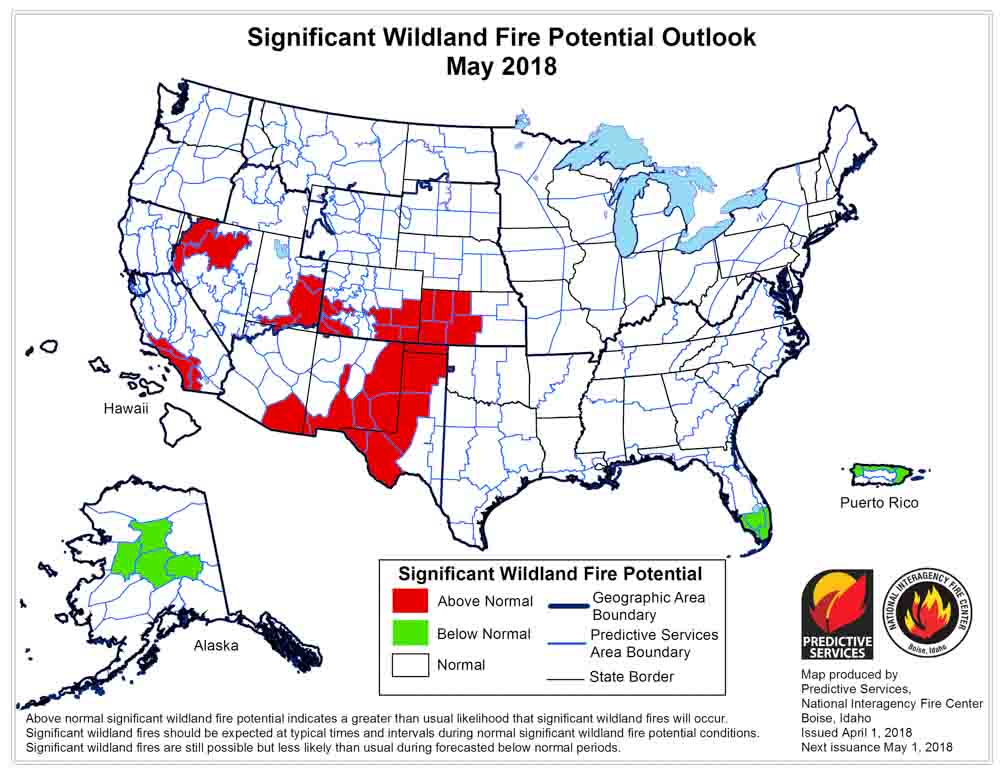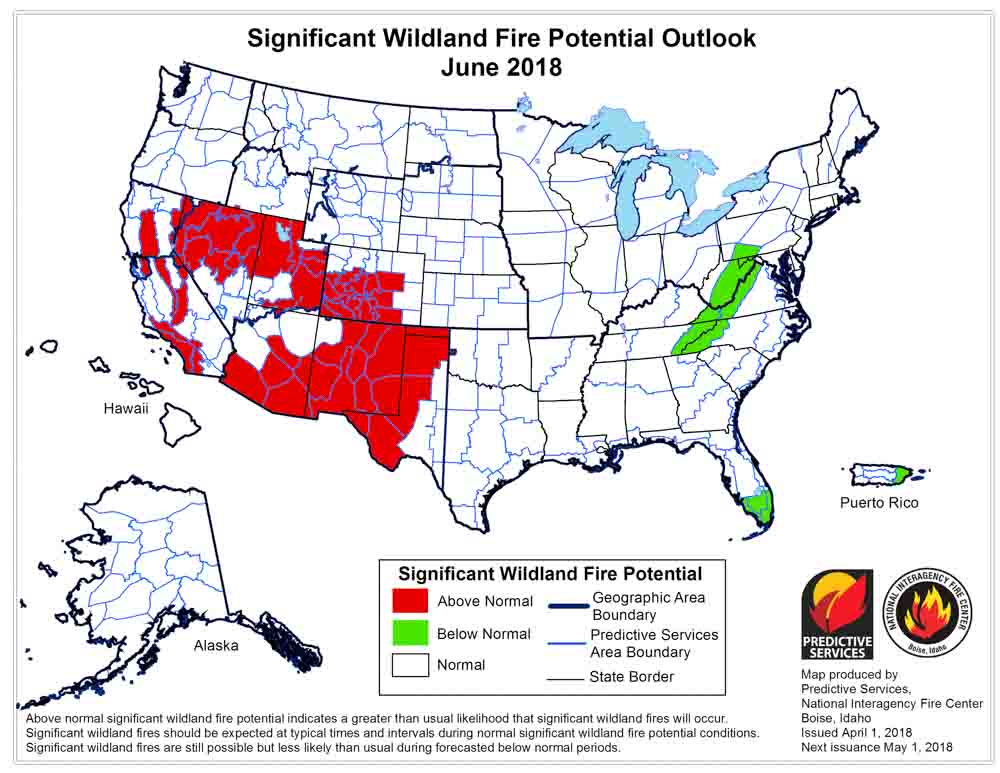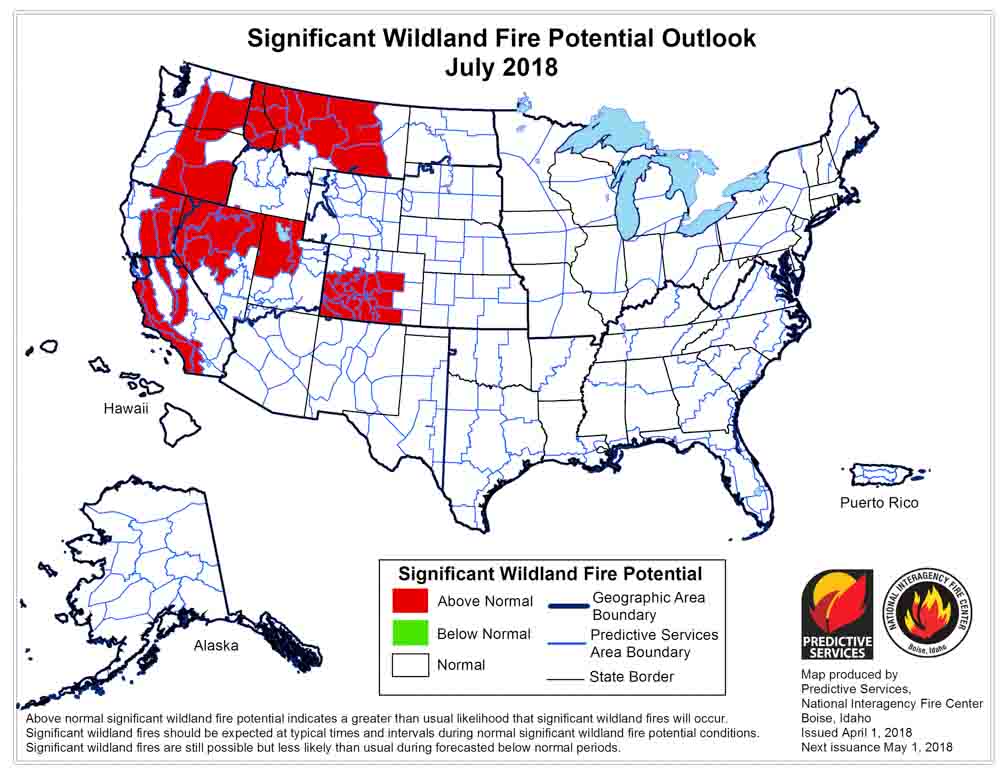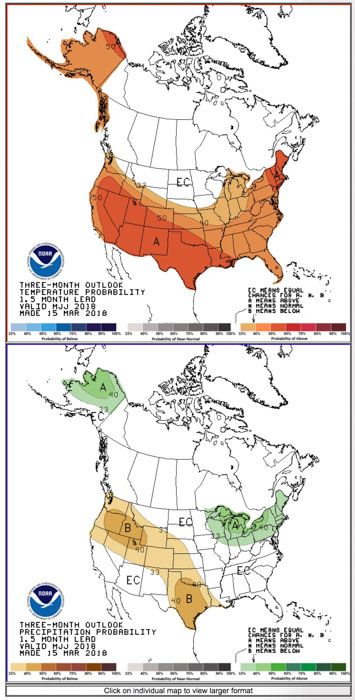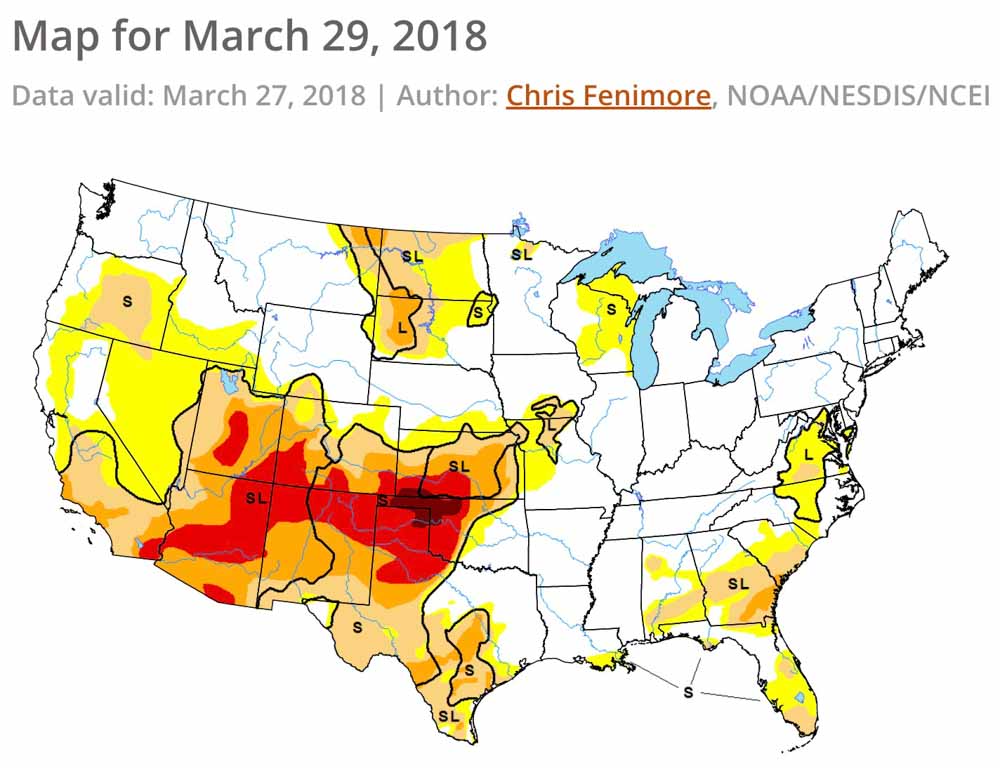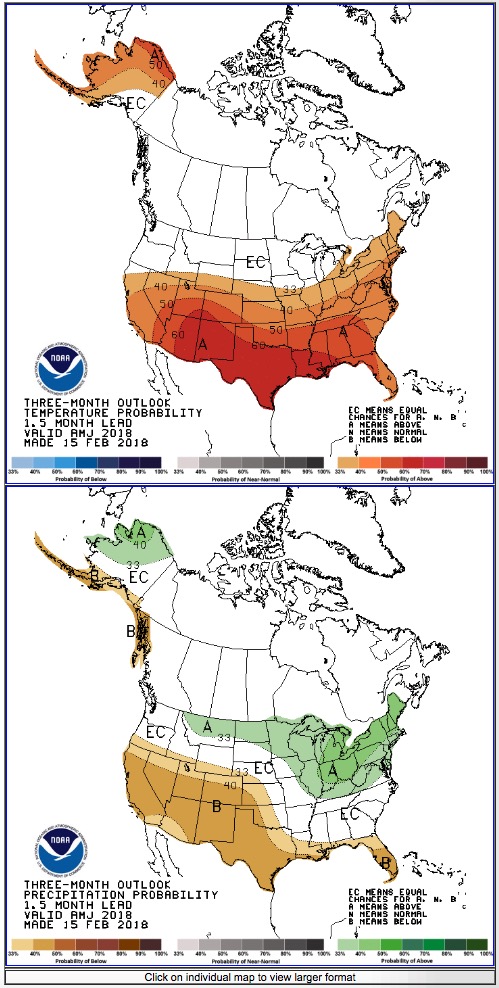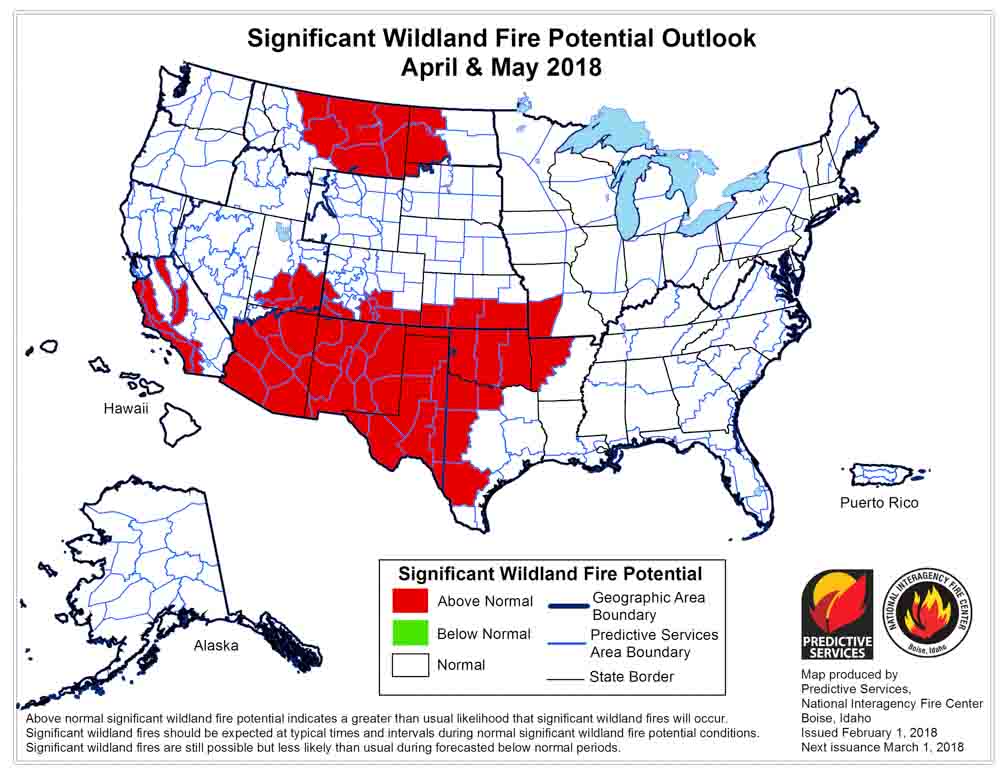(Originally published at 11:55 a.m. MDT July 2, 2018)
On July 1 the Predictive Services section at the National Interagency Fire Center issued their Wildland Fire Potential Outlook for July through October. The data represents the cumulative forecasts of the ten Geographic Area Predictive Services Units and the National Predictive Services Unit.
If their analysis is correct, in July the areas with the highest potential will move from the Southwest to Washington, Oregon, Idaho, Utah, California, and northern Nevada.
Below are:
- The highlights of the NIFC narrative report for the next several months;
- NIFC’s monthly graphical outlooks;
- NOAA’s three-month temperature and precipitation forecasts; and,
- Drought Monitor.
“Abnormally dry conditions along the West Coast allowed for a northward expansion of drought into western Oregon and Washington in June. Some improvement was noted across the southern Great Plains while drought emergence was observed across the Lower Mississippi River Valley. Preexisting drought conditions and continued drier than average conditions across the Southwest allowed for a normal progression of the fire season across the Four Corners Region until mid-month when the remnants of Hurricane Bud moved north from Mexico and produced widespread wetting rainfall that reduced the elevated large fire potential in that area. While rainfall amounts that were greater than 200% of average were received across Arizona, New Mexico, and portions of southwestern Colorado, the Great Basin and California remained very dry receiving less than 10% of average precipitation. Temperatures across the West were near average for the month from the Pacific Coast east to the Continental Divide. East of the Divide, temperatures were near average.
“The southwestern monsoon is expected to arrive in early July and should reduce fire activity across the Southwest. A normal refocusing of fire activity north into the Great Basin and west into California is expected. The existence of a continuous grass from this year along with carryover of fine fuels from 2017 should lead to Above Normal Significant Large Fire Potential in these areas. By late July, fire activity is expected to increase across Oregon and Washington. Entry into the Western Fire Season will be delayed slightly across most of the Northern Rockies due to the persistent wet systems that impacted the region through… However, precipitation data shows an area of below average precipitation for June across extreme northwestern Montana and northern Idaho. As a result, both areas could experience an early entry into the fire. In Alaska, the fire season will gradually come to an end in July as precipitation events become more frequent.
“August is the peak of the Western fire season. Seasonal transitions focus the fire activity over the northwestern quarter of the country, though California also continues to experience significant activity. With significant carryover of fine fuels from last year and an average grass crop growth this year, elevated fire potential is expected August through early September in this region from California and the Central Great Basin north to the Canadian Border. Higher elevations in the mountains may also see elevated fire potential as well should warmer and drier than average conditions develop as expected.
Continue reading “Wildfire potential increases in California and the Northwest”



